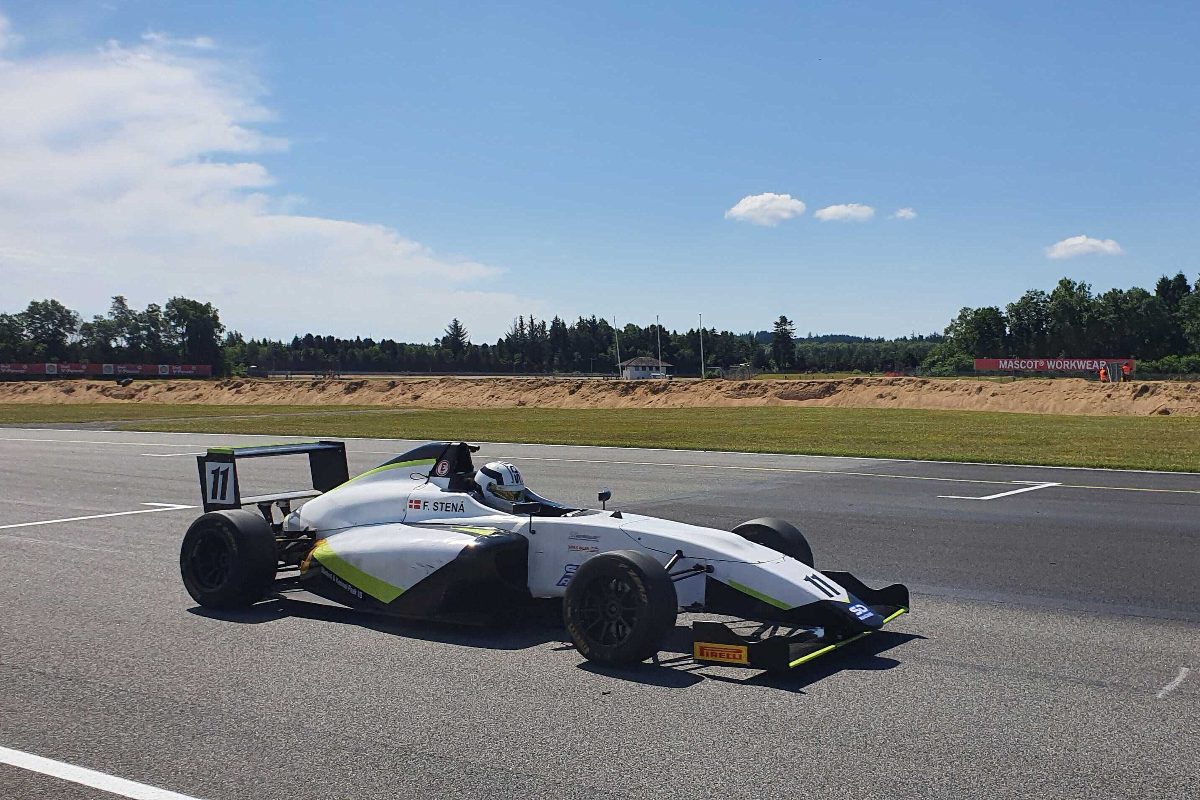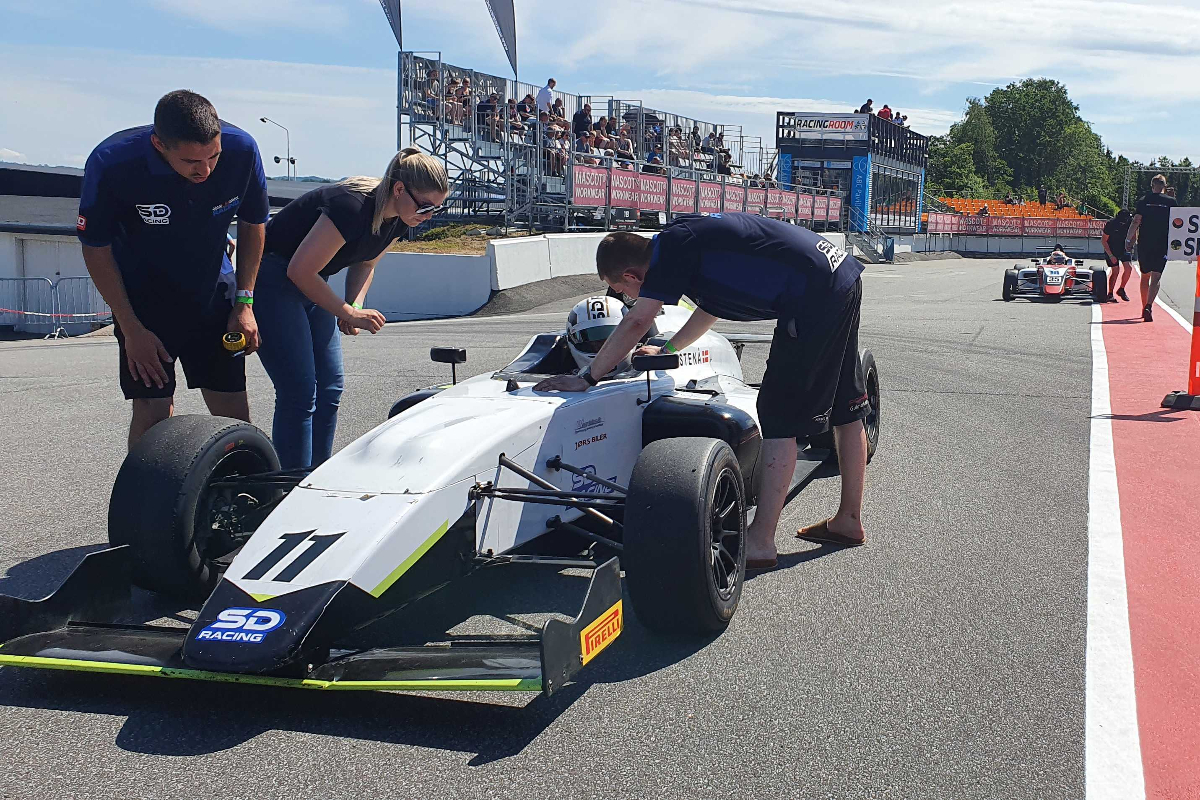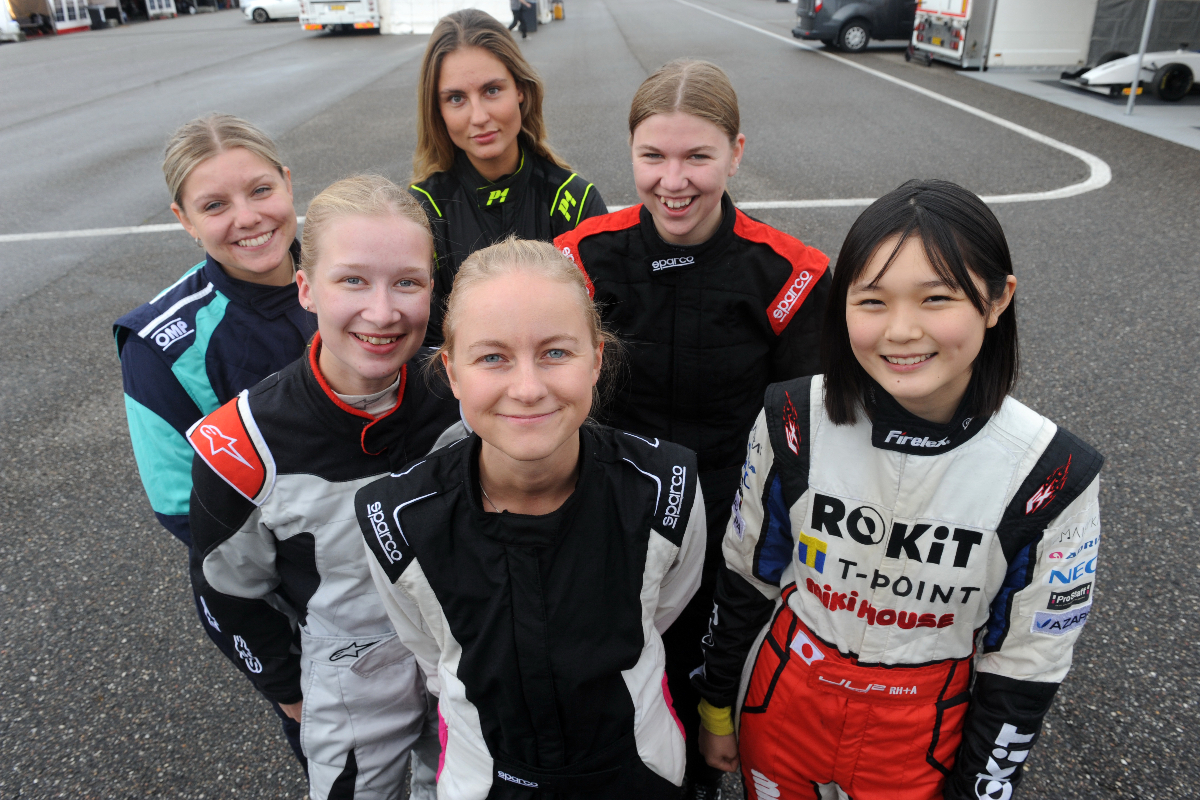
Photos: Ida Wood
The Danish F4 championship is a bit of an oddity on the modern European single-seater map, but its affordability means teams can still be run out of small trailers. So Formula Scout joined one for a weekend…
Formula Scout has followed Danish Formula 4 closely over the last few years, from its days as a Renault-supported feeder to the Formula Renault Eurocup to its time as a surprise COVID-19 pandemic hit (almost a motorsport equivalent to Tiger King as it was the first big thing to happen during the first global lockdown) and then the focus of a Fittipaldi and Noda battle in 2021.
This year there are no famous names on the grid, most other F4 series have moved on to a second generation of machinery and the motorsport fanbase has found new fancies, but Danish F4 is arguably stronger than ever. A record 11 F4 cars entered the most recent round at Jyllandsringen, supplemented by three Formula 5 cars, and this writer was working on one of those F4 cars. Well, I was helping out.
It all began with SD Racing’s chief engineer Victor Forner proposing the idea of an immersive Danish F4 experience, which I willingly took up, and with a little help from the series itself (in the form of a paddock tour to learn all the faces, a supply of free biscuits and a lift from the circuit at the end of the weekend) a trip was planned for the Jyllandsringen round in June.
The method of getting there ended up being far more dramatic than planned, which you can read up on in the below Twitter thread, but once I did arrive at the track it was straight into race weekend work in the form of a track walk. There was lots of notes taken, and the chance to speak to SD Racing’s co-owner, team manager and some-time driver Ann-Sofie Degel.
Formula Scout's Danish Adventure
A thread
— Ida (@wood_ida_) August 9, 2022
SD Racing doubled in size for 2022, as Degel and fellow co-owner and regular driver Frederik Stena (who is also Degel’s boyfriend) were joined by former Noda Racing man Forner as engineer and Sebastian Lindhardt as mechanic. Lindhart’s girlfriend also helps out, and then with the addition of Formula Scout for the weekend there was a massive six-person effort for the one-car operation. Previously it had just been the team’s titular pair (Stena Degal Racing, if you hadn’t twigged).
“The team just got 100% bigger [for 2022] and then everything has just been alright,” Degel chuckles as she explains SD Racing’s story during our track walk.
“We are of course the smallest team, we are kind of the underdogs, because we’re doing it ourselves. But it’s kind of the same [as last year], you know.
“And it’s just weird, we’re just really doing this because passion of course, and then because Fred and I have had the dreams of being pro drivers. And it has driven both of us for many years in go-karts, Fred has been in some junior talent programmes and I have gone to a school – actually one of the first in Denmark with motorsport as a course.
“Our parents just didn’t have the interest for our sports. Both Frederik and my parents are with horses, and mine also with music. So the interest is just not there. So we were just quite [determined], like children. So pay everything [ourselves] to go out and drive. And everything is just so big now [in cars], you know. When we were little, karting was crazy, it was the biggest thing for us and it was what we were living for. And now we look back and it’s like ‘urgh, it was so easy and everything was so cheap’. It’s nice, and we just had some very big dreams.”
In SD Racing’s first season, Stena had a best finish of sixth in 13 races, while Degel took over their car for the final round and claimed two 12th places. This year the results have improved, with Stena currently seventh in the standings after being runner-up in the second race at Sweden’s Sturup Raceway and collecting two other top-five finishes.

Viktor, Sofie-Ann, Frederik & Sebastian
“All the other teams, they’re not making fun of us, but the Danish way of chatting with each other and all that. And they are calling us stubborn. They know we are the underdogs, but we did quite well [with the strategy that earned the podium]. We have to do what we can do. We don’t have all the big machines and everything, so we do it with strategy and some other things and just keep on fighting. And eventually we fail. So I think the same for you guys, if you just keep on doing it, you know. And some days, one of the paying companies and will see one of you or many of you and you will get by.”
Well, I wasn’t expecting that last bit. But to be fair Formula Scout is a similar-sized team of people with big ambitions and a barely visible budget.
“You wouldn’t do journalism if it weren’t for the, you know, passion,” Degel adds.
“I don’t think it’s that much of a difference [between FS and SD], but I think the Danish way of doing it is a bit different. Because we’re a smaller country and (sighs) yeah, just different.”
Motorsport in scale is far smaller in Denmark than the United Kingdom, and Jyllandsringen is the country’s largest track at 1.429 miles. It’s not that long.
“But in Denmark it’s long. We have Padborg Park as well. It’s short [at 1.286 miles]. It’s called the Mickey Mouse track because it’s so small and it’s just flat. Dead flat.”
One challenge of these short and otherwise low to medium-speed circuits is the walls can be quite close at some corners due to the small land profile they’re fitted in.
Oddly Danish F4 teams can test far more over the border at Sturup than at home, and SD Racing “was so frickin’ happy” to get its first podium there. The car they did it with has quite an interesting history, having been bought from World Endurance Championship team High Class Racing and with a list of previous owners that includes F5 icon Mads Hoe.

Forner celebrates as Stena finishes second at Sturup
The money to buy the car came from Degel and Stena’s own funds, and they brought in sponsors to help launch their team.
“We want to do as much [racing] as possible. But I think we are used to getting the money that we need, and getting it to work,” Degel says of funding SD Racing and if it can grow any larger in the future.
“And then we have dreams, and we go for the goal, and then we just make it happen. It’s kind of crazy, if you look from outside. But we are looking into some other classes and maybe doing long-distance, with maybe more drivers. So it’s not only me and Frederik, but maybe one or two paying drivers as well.
“We want Sebastian [the mechanic] to be with us, so we haven’t quite figured it out. But we’re also focusing on this season, because we really want to give it all – a big shot on this one, and then we can make it work.”
As we approach the end of the track walk, Degel points to a corner and recounts her first time in the driving seat at Jyllandsringen and an incident with Juju Noda.
“Last time we were here I was driving, and actually did it quite fine I think. But it was crazy. I was in an accident with one of the other drivers that hit my wing, and I was like ‘oh, is it off, is it on?’, and then I was coming to the corner here, just before the pit entrance, and then Mille Hoe was on the one side and Noda was on the other and I couldn’t just [move], so I took some of the gas off because I had to go in, and there was just screaming and yelling [from Noda afterwards].”
Danish F4 is a calmer paddock now, but the level of competition has gone up with several multi-car teams running out of the kind of large trucks you would see in other F4 series while SD Racing still stands out with its small horse trailer.
“We were rookies, but the teams around have got bigger and they have all the equipment and have a lot of experience, not in formula maybe but then in the racing world. So that makes it kind of more difficult,” Degel thinks.

Danish F4’s women racers: Degel, Hoe, Rasmussen, Sonderskov and Noda. Credit: Morten Alstrup
“Last year, we talked with everybody. And it was just very nice and all that.” But their rivals weren’t welcoming by default.
“But we don’t take no for an answer. This year, the drivers are very young, they are with their parents and all these big teams, so they’re kind of like this [different approach]. It has opened a bit [more] last time, but it’s still very close and people are themselves and there’s competition. It’s fine.”
Stena, having written up all of his notes for the lap, adds: “The level is much higher this year, it’s crazy high. Even though we haven’t got the crazy names like Juju and Fittipaldi and all that, the level is just crazy. Even more this season.”
Track walk done, team mentality understood, now back to the paddock and the horse trailer. During the weekend the car is parked next to the trailer, so the team can sleep inside. Not much room, but I did sign up for the full Danish F4 experience.
That evening my job was to drain the brakes on the car and check the condition of the tyres to help decide which ones to put on the car for Saturday, and the day’s work was completed at 11:30pm. Unfortunately, Saturday didn’t quite go to plan.
Stena went ninth fastest in practice, having selected the old tyres to use, and two seconds off the pace of Hoe in his F5 car. Maybe first place wasn’t expected, but the time gap shouldn’t have been that large and hopefully some changes would improve the car balance for qualifying.
So, car parked up next to the trailer, and we take off the tyres to utilise a better set for qualifying. Except one tyre won’t come off. Everyone has a go at trying to remove it, and it won’t budge. Concerned faces all around.
Various tools are used, including a GT3 wheelnut gun lent from elsewhere in the paddock, and a lot of heavy hitting, and eventually the wheel did detach itself from the car. However the hours spent on that ruined our qualifying preparation, and when Stena went out he reported the balance had gone from oversteer to understeer. Read more of Forner’s description here:
Después de un día para recopilar todo y procesar lo sucedido, voy a comentar lo que fue la tercera ronda de la F4 Danesa 2022. Es bonito hacer hilos de estos cuando las cosas salen bien. Pero cuando no… También me gusta hacerlos.
DENTRO HILO, o algo así. pic.twitter.com/zuZn8j54hX
— Víctor Forner (@Victor_Forner) June 28, 2022
We waved him back into the pits from the pitwall, some tweaks were made and there was enough time for one more run. Ninth place was the result, but a spin caused a bit of damage and picked up a lot of gravel and grass so the gap between qualifying and the race was spent doing that before any more set-up adjustments could be made. And regrettably I wasn’t helping out at this point as I had a TCR Denmark race to report on at the same time.
Seventh place was the outcome of race one, and meant a front-row start for the reversed grid race two on Sunday. Unfortunately that started with more misfortune as Stena was knocked off-track and down to seventh on the opening lap. There was then a lengthy battle with Alyx Coby, which led to another off on the penultimate lap, a broken front wing and a lowly ninth place.
The power of tape meant the wing was fixed in time for race three, and some further tweaks meant the balance was too, but then another wheel-to-wheel incident meant the wing was damaged again and ninth place was the end result. It was frustrating for everyone, and there were some disagreements, but for such a small team (and an engineering newcomer in the form of this journalist) it was a weekend in which a lot was learned.
On the Sunday evening I didn’t stay working on the car until past sunset as I needed to get across Denmark to catch my flight home at 11:45pm. And as if the Danish adventure hadn’t been dramatic enough already, this was where it stepped up from ‘eye-opening experience’ to ‘iconic Ida Wood travel experience’. Check out the tweets below to find out how:
I take two trains, get to Billund before 9pm, get through airport security in about 4 minutes then sit and work on my Chromebook waiting for gate number to appear…
— Ida (@wood_ida_) August 9, 2022
